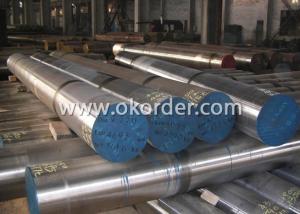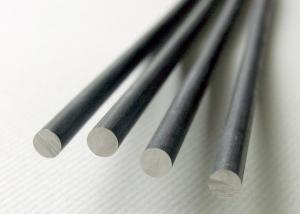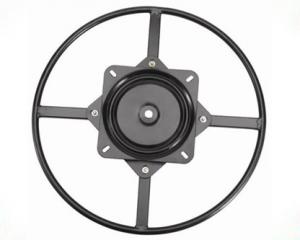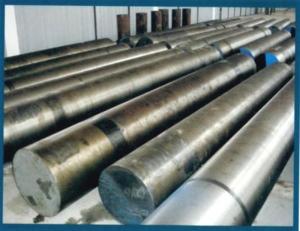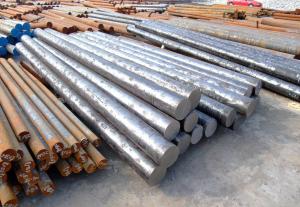1045 Cold Drawn Steel Round Bar
- Loading Port:
- Tianjin
- Payment Terms:
- TT OR LC
- Min Order Qty:
- 25 m.t.
- Supply Capability:
- 50000 m.t./month
OKorder Service Pledge
OKorder Financial Service
You Might Also Like
Item specifice
1045 Cold Drawn Steel Round Bar
Product Details:
1.Standards: AISI:1045/ASTM:1045/JIS:S45C/DIN:1.0503/GB45/En8/CK45/XC45/C45
2.Round sizes: Dia 80-500mm Length 2500-5800mm or as your request.
3.Factory condition:Annealed to HBS<220;hot rolled,black.
4.Test:Ultrasonic test according to SEP 1921
5.Packing situation: standard seaworthy packing or as customer required
6.Delivery time: 20 days after order confirmed
7.Payment: T/T or L/C at sight.
Chemical composition:
C | Si | Cr | Mn | Ni | P | S | Cu |
0.42-0.55 | 0.17-0.35 | ≤0.022 | 0.50-0.75 | ≤0.012 | ≤0.018 | ≤0.01 | ≤0.017 |
Application:
Plain carbon steel for mechanical engineering and automotive components.
It is usually supplied untreated but can be supplied to order in the normalized or finally heat treated (quenched and tempered to "Q" or "R" properties), which is adequate for a wide range of applications.
It is a very popular grade of through-hardening medium carbon steel, which is readily machinable in any condition. It is suitable for the manufacture of parts such as general-purpose axles and shafts, gears, bolts and studs. It can be further surface-hardened typically to 50-55 HRC by induction processes, producing components with enhanced wear resistance.
In its heat treated forms possesses good homogenous metallurgical structures, giving consistent machining properties.
Product Show:
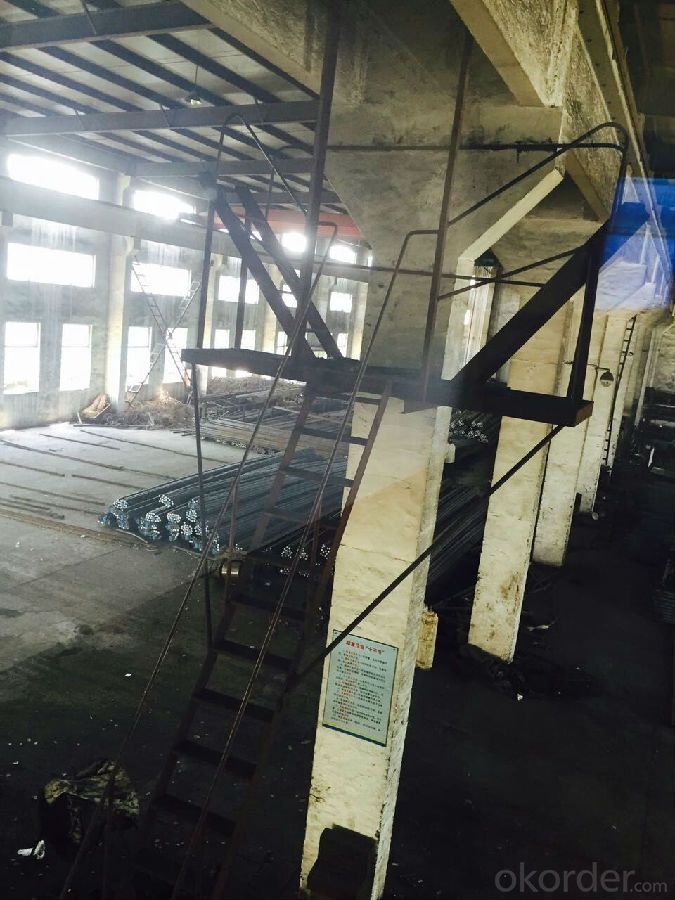

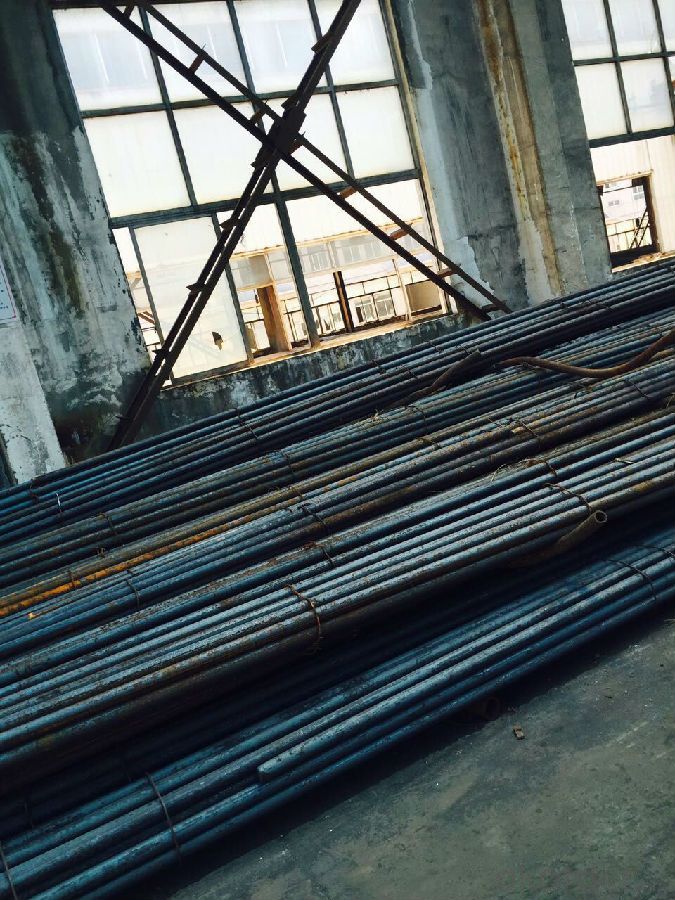
- Q:What are the most common alloys used in special steel?
- The most common alloys used in special steel are chromium, nickel, molybdenum, and vanadium.
- Q:What is the significance of phosphorus in special steel?
- Phosphorus plays a significant role in the production of special steel due to its various beneficial properties. Firstly, phosphorus acts as a deoxidizer, helping to remove impurities such as oxygen from the steel during the manufacturing process. This improves the overall quality and purity of the steel, making it more resistant to corrosion and enhancing its mechanical properties. Moreover, phosphorus can increase the strength and hardness of the steel, making it suitable for applications that require high durability and wear resistance. It also helps in improving the machinability of the steel, allowing for easier shaping and processing. Additionally, phosphorus enhances the steel's ability to retain its strength at elevated temperatures, making it suitable for applications in high-temperature environments, such as power plants or aerospace industries. However, while phosphorus offers these advantages, it is important to control its concentration within certain limits, as excessive levels can lead to detrimental effects. High phosphorus content can result in brittleness, reduced toughness, and decreased weldability of the steel. Therefore, careful consideration is necessary to balance the beneficial effects of phosphorus with its potential drawbacks. In summary, the significance of phosphorus in special steel lies in its ability to improve the quality, purity, strength, hardness, machinability, and high-temperature performance of the steel. By controlling the phosphorus content within appropriate limits, manufacturers can produce special steel with enhanced properties, meeting the specific requirements of various industrial applications.
- Q:What are the different types of special steel coatings?
- There are several different types of special steel coatings that are used to enhance the properties and performance of steel. Some of the most common types include: 1. Galvanized Coatings: This type of coating involves the application of a layer of zinc to the steel surface. Galvanized coatings provide excellent corrosion resistance, making them suitable for outdoor applications and structures exposed to harsh environments. 2. Epoxy Coatings: Epoxy coatings are known for their exceptional durability and chemical resistance. They are often used to protect steel from corrosion, abrasion, and chemical exposure. Epoxy coatings can be applied as single or multi-layer systems, enhancing the steel's lifespan and performance. 3. Powder Coatings: Powder coatings are a type of dry coating that is applied electrostatically and then cured under heat. They offer excellent protection against corrosion, impact, and UV damage. Powder coatings are available in a wide range of colors and finishes, making them a popular choice for aesthetic purposes as well. 4. Thermal Spray Coatings: These coatings involve the application of molten particles onto the steel surface using a thermal spray gun. The most common types of thermal spray coatings for steel are ceramic coatings, which provide enhanced wear resistance, thermal insulation, and corrosion protection. 5. PVD Coatings: Physical Vapor Deposition (PVD) coatings involve the deposition of thin layers of metallic or ceramic materials onto the steel surface through a vaporization process. PVD coatings provide improved hardness, wear resistance, and low friction properties to the steel. 6. Organic Coatings: Organic coatings, such as polyurethane or acrylic coatings, offer protection against corrosion, UV damage, and chemical exposure. These coatings are commonly used in architectural applications, automotive parts, and industrial equipment. 7. Chrome Plating: Chrome plating involves the deposition of a layer of chromium onto the steel surface. This coating provides excellent corrosion resistance, hardness, and a decorative finish. Chrome plating is often used in automotive applications and for decorative purposes. It is essential to select the appropriate type of special steel coating based on the specific requirements of the steel component or structure, including the level of corrosion resistance, durability, aesthetics, and environmental factors.
- Q:How does special steel contribute to sustainable construction?
- Special steel contributes to sustainable construction in several ways. Firstly, it has a significantly longer lifespan compared to other construction materials, reducing the need for frequent repairs or replacements. This leads to reduced resource consumption and waste generation. Additionally, special steel is highly durable and resistant to corrosion, making it an ideal choice for structures in harsh environments, such as bridges or offshore wind farms. This longevity and resilience reduce the environmental impact associated with the maintenance and replacement of infrastructure. Furthermore, special steel can be recycled and reused multiple times without losing its properties, reducing the demand for virgin materials and minimizing the carbon footprint of construction projects. Overall, the use of special steel in construction helps promote sustainability by increasing the lifespan of structures, reducing resource consumption, and minimizing waste generation.
- Q:What are the different methods for improving the tensile strength of special steel?
- There are several methods for improving the tensile strength of special steel, including heat treatment, alloying, cold working, and grain refinement. Heat treatment involves heating the steel to a specific temperature and then rapidly cooling it, which can result in increased strength. Alloying refers to adding specific elements such as chromium, nickel, or molybdenum to the steel, which can enhance its strength properties. Cold working involves subjecting the steel to mechanical deformation at low temperatures, which can increase its strength. Grain refinement, on the other hand, involves controlling the size and distribution of the steel's crystalline structure, leading to improved strength.
- Q:What are the main advantages of using special steel in the construction industry?
- The main advantages of using special steel in the construction industry are its high strength, durability, and resistance to corrosion. Special steel has superior mechanical properties compared to regular steel, allowing for the construction of stronger and more robust structures. It can withstand heavy loads, extreme weather conditions, and natural disasters, ensuring the safety and longevity of buildings. Additionally, its corrosion resistance properties reduce maintenance costs and extend the lifespan of structures, making it a cost-effective choice in the long run.
- Q:How is electrical resistance steel used in heating elements?
- Electrical resistance steel is commonly used in heating elements due to its high resistance to electric current. When an electric current passes through the steel, it encounters resistance, which in turn generates heat. This heat is then transferred to the surrounding environment, allowing the heating element to fulfill its purpose of heating up a space or object.
- Q:How does special steel perform in high-temperature oxidation resistance?
- Special steel is specifically designed to have excellent high-temperature oxidation resistance. It is able to withstand prolonged exposure to high temperatures without undergoing oxidation, ensuring its structural integrity and performance are maintained even in extreme conditions.
- Q:What are the different heat treatment processes used in special steel?
- Some of the different heat treatment processes used in special steel include annealing, tempering, hardening, and quenching. Each of these processes is designed to alter the properties of the steel, such as its hardness, strength, and ductility, to meet specific requirements for different applications. Annealing involves heating the steel to a specific temperature and then slowly cooling it, which helps to relieve internal stresses and improve its machinability. Tempering involves reheating the steel after hardening to a lower temperature, which reduces its brittleness and increases its toughness. Hardening involves heating the steel to a high temperature and then rapidly cooling it, typically in water or oil, to achieve maximum hardness. Quenching is the rapid cooling process used to achieve hardening. These heat treatment processes can significantly enhance the performance and durability of special steel in various industries.
- Q:How are copper alloys used in electrical applications?
- Copper alloys are widely used in electrical applications due to their excellent electrical conductivity and thermal conductivity properties. These alloys, such as brass and bronze, are used in the production of electrical connectors, terminals, and conductors. They are also utilized in circuit breakers, switches, and motors due to their high strength and corrosion resistance. Additionally, copper alloys are used in the manufacturing of electrical cables and wiring systems, ensuring efficient transmission of electricity with minimal power loss.
1. Manufacturer Overview |
|
|---|---|
| Location | |
| Year Established | |
| Annual Output Value | |
| Main Markets | |
| Company Certifications | |
2. Manufacturer Certificates |
|
|---|---|
| a) Certification Name | |
| Range | |
| Reference | |
| Validity Period | |
3. Manufacturer Capability |
|
|---|---|
| a)Trade Capacity | |
| Nearest Port | |
| Export Percentage | |
| No.of Employees in Trade Department | |
| Language Spoken: | |
| b)Factory Information | |
| Factory Size: | |
| No. of Production Lines | |
| Contract Manufacturing | |
| Product Price Range | |
Send your message to us
1045 Cold Drawn Steel Round Bar
- Loading Port:
- Tianjin
- Payment Terms:
- TT OR LC
- Min Order Qty:
- 25 m.t.
- Supply Capability:
- 50000 m.t./month
OKorder Service Pledge
OKorder Financial Service
Similar products
New products
Hot products
Related keywords
























